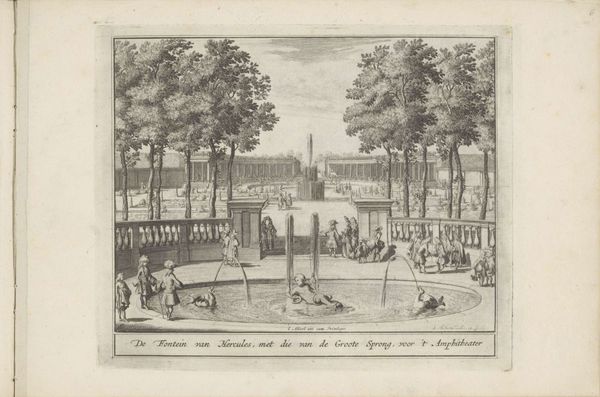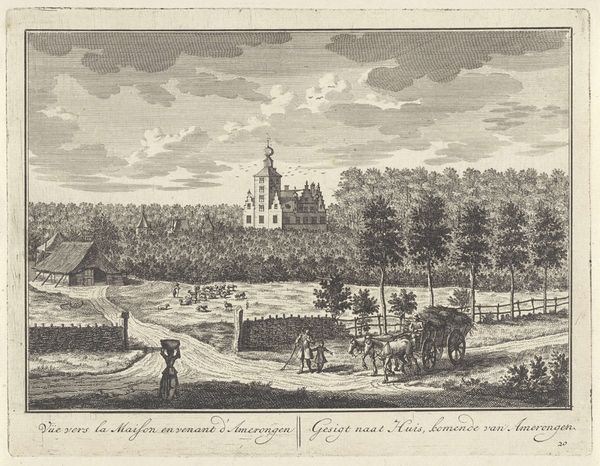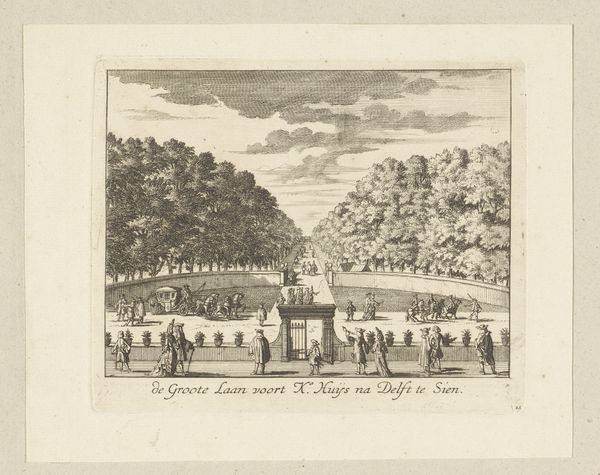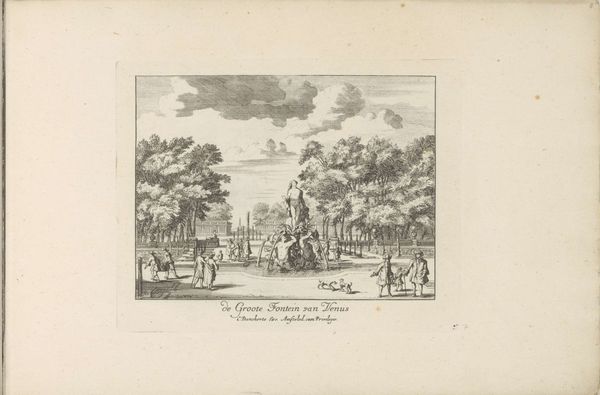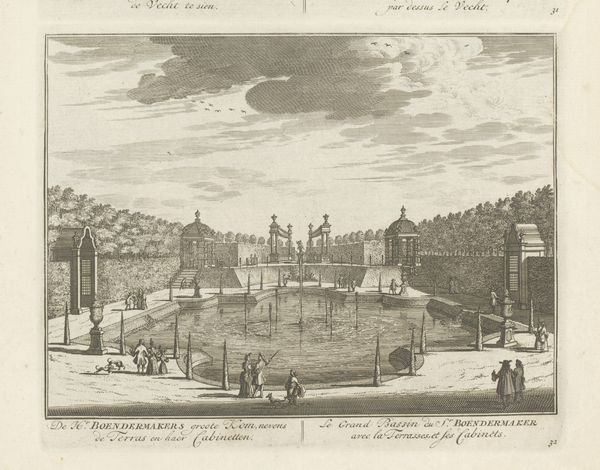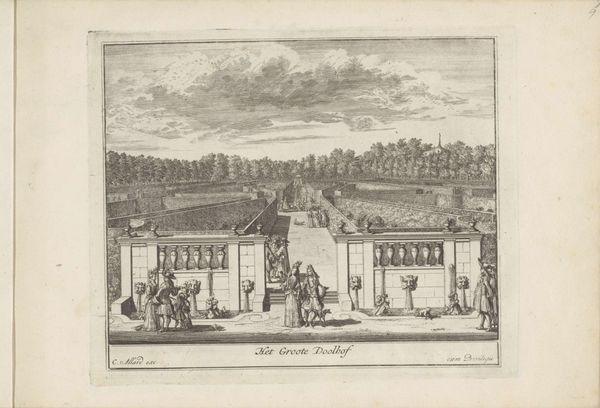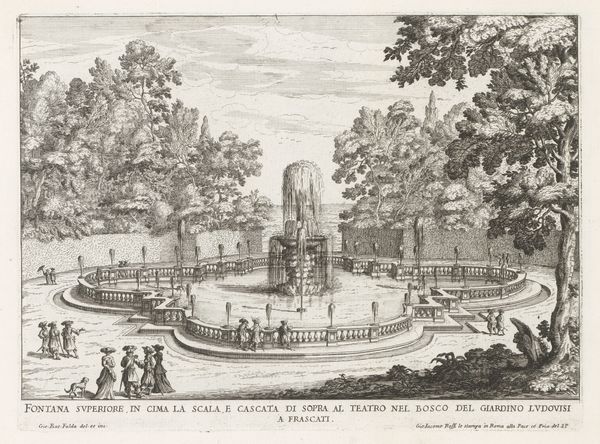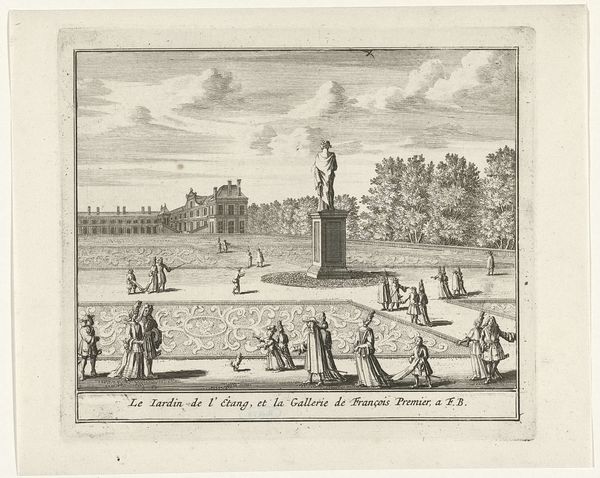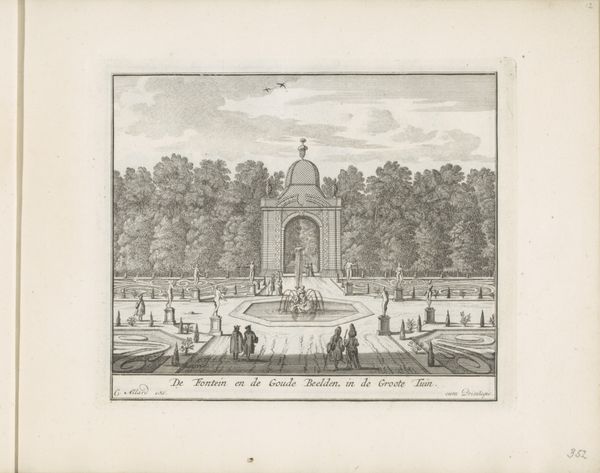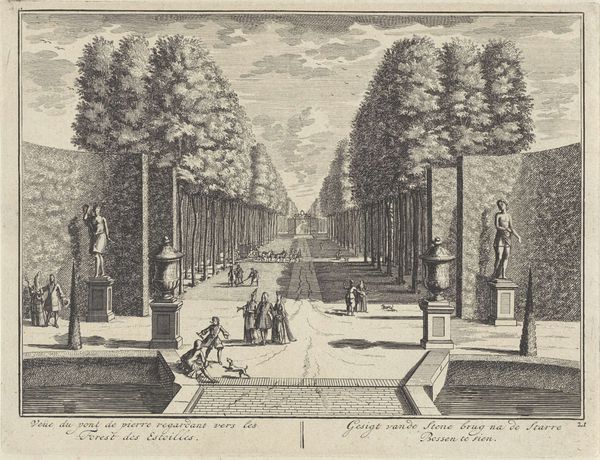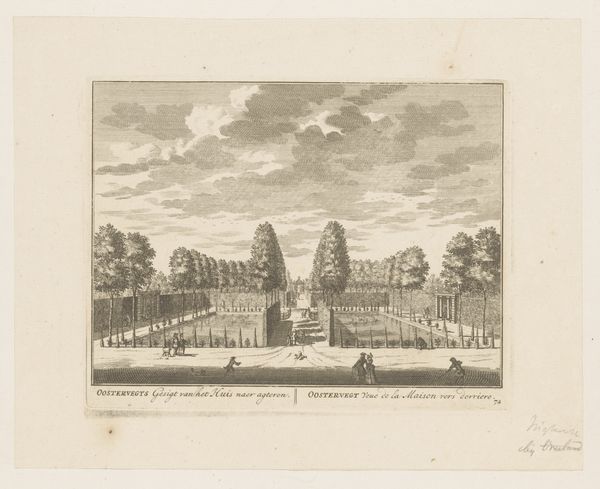
print, engraving
baroque
old engraving style
landscape
cityscape
engraving
Dimensions: height 171 mm, width 206 mm
Copyright: Rijks Museum: Open Domain
Curator: Look at this lovely impression, "Zessprong bij het beeld van Faunus," created sometime between 1689 and 1702. It's a print currently residing here at the Rijksmuseum, imagined by Laurens Scherm. It gives you the feeling of stepping back in time, doesn't it? Editor: Absolutely. There's something inherently wistful about this piece. The delicate engraving, the formally arranged trees, and the central statue--it evokes a sense of orderly leisure, yet with an underlying melancholy, almost as if we’re glimpsing a world about to vanish. Curator: Vanishing, or perhaps transforming. Consider the statue of Faunus—a figure deeply rooted in nature and the wild. Placing him within this very controlled garden landscape... that tension, to me, is central. Are we taming nature, or is nature merely tolerating our presence? Editor: The statue is the real puzzle, isn't it? The trees are beautiful, formally planted, suggesting structure. Then we have the human figures in baroque attire surrounding the statue. And, there’s that sense of classical mythology juxtaposed against what would have been cutting-edge garden design. Faunus—god of the forest—watched over by the elite, as a form of statement perhaps. It's almost an early study in power dynamics. Curator: And see how Scherm plays with light and shadow using only the delicate lines of the engraving? He directs our gaze towards that central statue, really drawing the eye to this somewhat hidden or idealized figure. This highlights the fact that gardens were so important in Baroque-era paintings. They are no longer just a collection of trees or shrubs. Gardens were carefully constructed spaces in which one can lose one's mind, and become enlightened with creativity, if one lets their mind go. Editor: And even further back, to ancient Greece. If we consider Arcadia and the golden age and combine these ancient concepts and link them into Scherm's contemporary Baroque view, we get this amazing cultural collage spanning two-thousand years. And I see a garden representing so much: philosophy, power, social hierarchy, aesthetics, mythology all rolled into one beautiful vista. Curator: A vista offering not just visual delight, but a space to think, reflect and perhaps get a bit lost... as we should all allow ourselves now and then! Editor: Indeed. It serves as a vivid reminder that the images we create echo and reframe our past. What stories they might inspire if we only take the time to listen.
Comments
No comments
Be the first to comment and join the conversation on the ultimate creative platform.
